
JEWELED
REMAINS
Dear
God of the Living and the Dead,
Let
us pray for the dead, apparently Christian martyrs, whose
remains
found in Roman catacombs, were decorated
with gems and precious metals by German nuns in the 1600's.
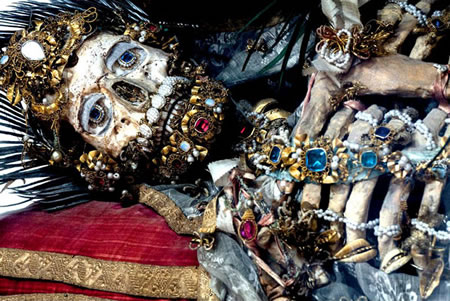
Let
us pray also for those dedicated women
who did this gruesome, painstaking labor,
and for the patrons who supported the work,
which seems strangely macabre and weird to us today, and
for the souls whose skeletons
lie here bejeweled in peace.
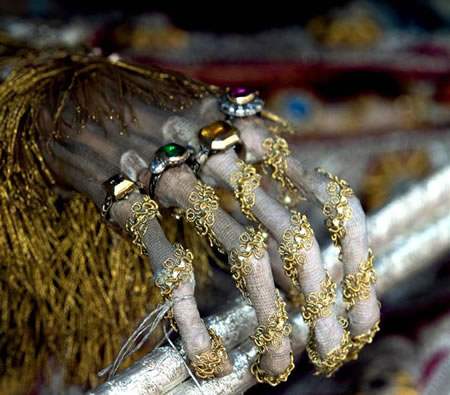
Bless,
Lord, this gilded hand, which,
we can assume, was folded often in prayer
to you in ancient chapels long ago.
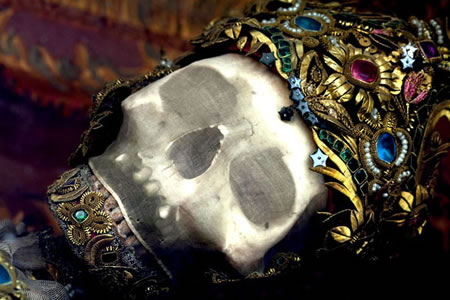
Please
enfold in Your forgiving mercy,
all those who created these strange relics, and may the
souls which once vivified
these moldering, gilded, gaudy skeletons, and those who
venerated them over
the centuries, now rest in peace.
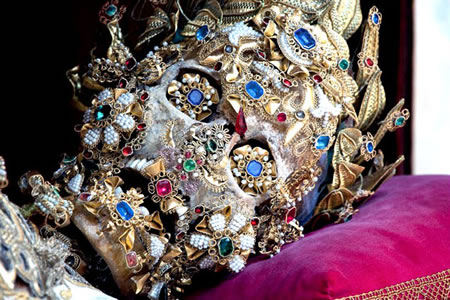
Their vacant eyes beckon us to paradise.
Amen
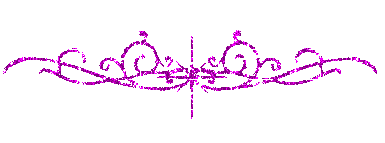
NOTE
These
dead, known as "the catacomb saints," were presumed
to be early Christian martyrs, put to death by the Romans.
The
remains were sent from Italy to Catholic churches and religious
houses in German-speaking Europe, to replace revered relics
which had been destroyed in the holy fury
of the Protestant Reformation.
There
was, however, an illicit trade in fake "relics"
sold to naive churchmen and wealthy noble families over
the ages, so the true provenance of the skeletons remains
virtually impossible to discover. However, the sincere ardor,
talent and energetic dedication
of the gold-working nuns, who decorated
and venerated the moldering bones,
is self-evident.
The
skeletons were carefully reassembled
and richly adorned in jewels and precious costumes by teams
of religious in the 1600's. Intended as flamboyant devotional
items,
they also turned out to be the finest works of art ever
created in human bone.
Once part of the spiritual life of many people, time passed,
and ardor for these sumptuously decorated skeletons wavered.
During
the Enlightenment they they were cast out as remnants of
a superstitious
and embarrassing Roman Catholic past.
The images of this
bizarre form of Baroque-era northern European art were made
by Dr. Paul
Koudounaris, a Los Angeles-based art historian, the
author of Heavenly
Bodies wherein the photographs first appeared.

Image
Ownership Credits
Next
Prayer
Prayer Index
Website Home
(c) 2013 Donn B. Murphy
Contact - Comment - Question? - dbm@nowstar.net
|